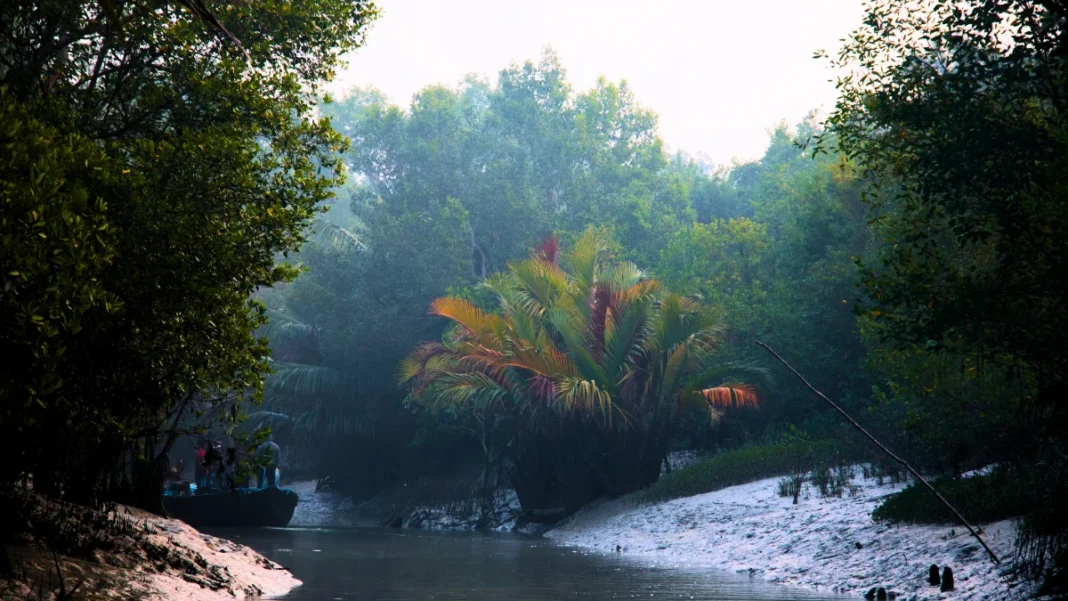In this week’s exploration of wildlife tourism in India, let’s take a trip to the Sundarbans National Park, a UNESCO World Heritage Site!
Sundarbans National Park

Tucked away between Bangladeshi and Indian borders, the Sundarbans are a stunning tapestry of 54 alluvial islands that the Ganga and Brahmaputra rivers have expertly carved. This picturesque area, which has the title of biggest delta in the world, gets its name from the profusion of Mangrove or “Sundari” trees that swing in different directions, producing an enthralling play of light and shadow. The Sundarbans, a respected biosphere reserve and UNESCO World Heritage Site, beckon with an attraction that is above and beyond ordinary.
The ethereal presence of the Royal Bengal Tiger, which shares its domain with a rich tapestry of varied animal species, gives an element of interest to these enigmatic mangrove woodlands. Here, the subtle balance of nature is conveyed by every sound of the mangrove leaves rustling and the ripples in the delta waters. Travelling to the Sundarbans is like walking into a living gallery of the glories of nature, where every scene presents itself as a tribute to the tenacity and vivid beauty of our world.
A trip to the Sundarbans National Park is more than simply a fun trip; it’s a spiritual getaway where you can spend time with Mother Nature. Beyond the stunning scenery, the non-communal customs of the local populace radiate a warm, inviting light that beckons guests to enjoy the peace and togetherness that characterise life in this special place. The Sundarbans are becoming more and more like a sanctuary, beckoning everybody who ventures there to join in on its enthralling story and providing a haven from the daily grind.
Biodiversity and Wildlife of Sundarbans National Park
The Sundarbans’ unique topography is a major factor in their attraction, which sets them apart from other typical tourist spots. This charming area, which is a crucial component of the biggest delta on Earth, is home to the greatest mangrove forests. A fascinating variety of plants and wildlife make their home among its brackish waters, mudflats, and the embrace of towering trees, resulting in a mystery that grows with each visit. Rivers, islands, and settlements are scattered over the enormous Sundarbans region, all of which add to the distinctive fabric of this amazing natural marvel.
Flora of Sundarbans National Park
A wide range of plants may be found in the Sundarbans National Park despite the difficulties caused by salty flooding and brackish waterways. The sturdy Sundari tree, Golpati, Champa, Dhundul, Genwa, and Hatal are among the 64 plant species. Mangroves, which contribute to the rich tapestry of around 78 different species, are essential to the survival of marine life. The mangrove woods give off an eerie air as sunlight peeks through the thick undergrowth, beckoning people to explore and discover the mysteries that lie beneath.
Fauna of Sundarbans National Park
In the Sundarbans, where the world is drawn to the famous Royal Bengal Tigers, wildlife tourism is booming. Past these magnificent cats, a variety of animals may be found in the mangrove habitat, such as macaques, wild boar, Indian grey mongoose, flying foxes, chital deer, and fishing cats. Along with saltwater crocodiles, red fiddler crabs, hermit crabs, and a variety of reptiles, including water monitors, king cobras, and rock pythons, marine life is equally fascinating. Because they contribute to the biological diversity and are home to endangered species like the Batagur Baska river turtles, the Sundarbans National Park is a wildlife enthusiast’s paradise.

Rivers, Islands, and Villages at Sundarbans National Park
The Ganga, Brahmaputra, and Meghna are the three main rivers that merge to form the Sundarbans delta. This complex network creates an interesting network of channels that intersect the area. There are several islands scattered around the countryside, each with its distinct appeal, such as Kalash, Henry, and Netidhopani. Village treks give a chance to see time-honoured customs, such as the custom of collecting honey. Villages like Pakhiralay, Dayapur, Bali, and Sajnekhali offer an insight into traditional livelihoods. These components work together to create a vivid tapestry that entices visitors to discover the Sundarbans’ rich tapestry of culture and environment.
Attractions in Sundarbans National Park
1. Kalash Islands
For those who love the outdoors, taking a winter holiday in the Sundarbans National Park promises to be a nice surprise. This season offers a unique spectacle as large numbers of Olive Ridley Turtles make their way to South 24 Parganas’ Kalash Island in order to lay their eggs. A sanctuary for bird enthusiasts, the area offers chances to see a variety of coastal bird wonders, such as the magnificent Great Stone Curlew, also called the Great Thick-knee, in addition to the interesting turtle activity. In addition to offering a break from the routine, winter in the Sundarbans offers visitors the opportunity to take in the breathtaking natural spectacles that adorn this alluring location.
2. Netidhopani
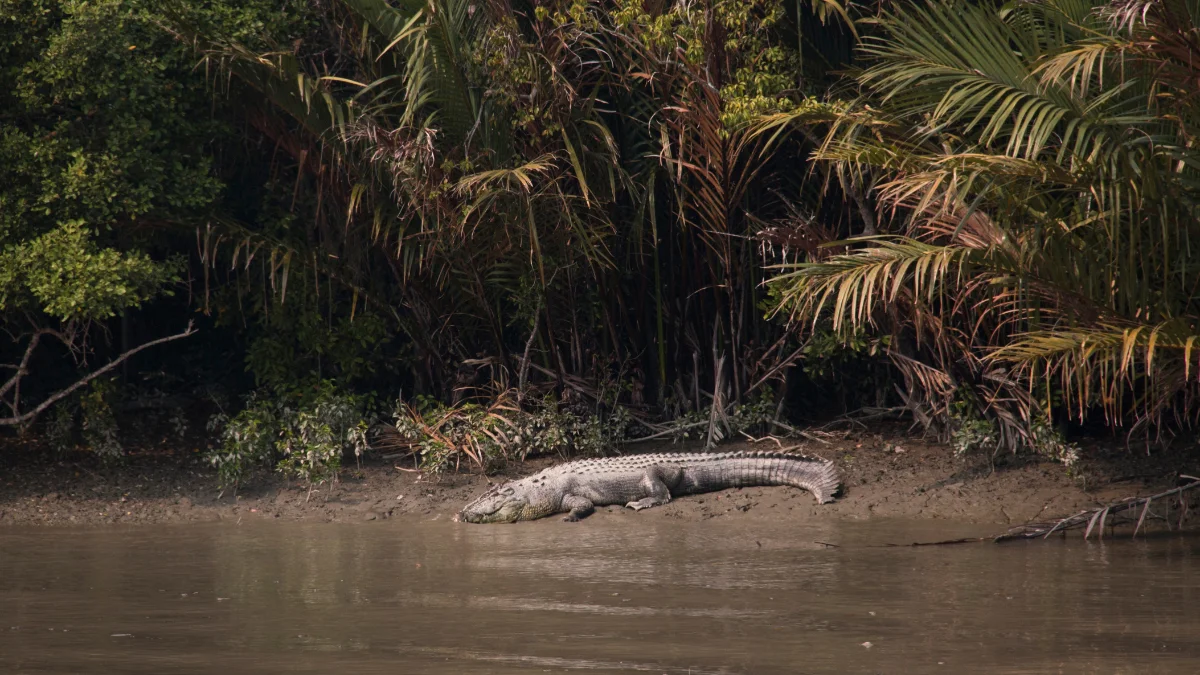
The history of the Sundarbans dates back centuries to the Mughal Empire when leased lands gave rise to villages that are now charming ruins that provide enthralling tourist experiences. A 400-year-old temple devoted to Lord Shiva is a respected witness to the region’s spiritual legacy in this historical tapestry. To the far right of the forest is a road that King Pratapaditya built as a coastal defence; it is now buried with soil and surrounded by a peaceful, sweet water pond. These time-worn ruins capture the enduring charm of the Sundarbans and beckon contemporary adventurers to walk in the footsteps of the past.
3. Sajnekhali Watch Tower
Considered one of Sundarbans National Park’s most popular viewpoints, Sajnekhali Watch Tower offers great chances to watch animals. Its popularity is increased by its advantageous closeness to the park, which gives tourists a close-up and immersive look at the abundant species. With a capacity of just 20 persons at a time, this watchtower guarantees a close relationship with the natural world. The tower is very well-liked by birdwatchers as it offers a lovely vantage point from which to view a variety of birds, such as Sandpipers, Pelicans, Plovers, Lap Wings, Kingfishers, and White-Bellied Sea Eagles. Every visit to the fascinating world of the Sundarbans’ animals is made unforgettable and rewarding by the Sajnekhali Watch Tower.
4. Henry Island
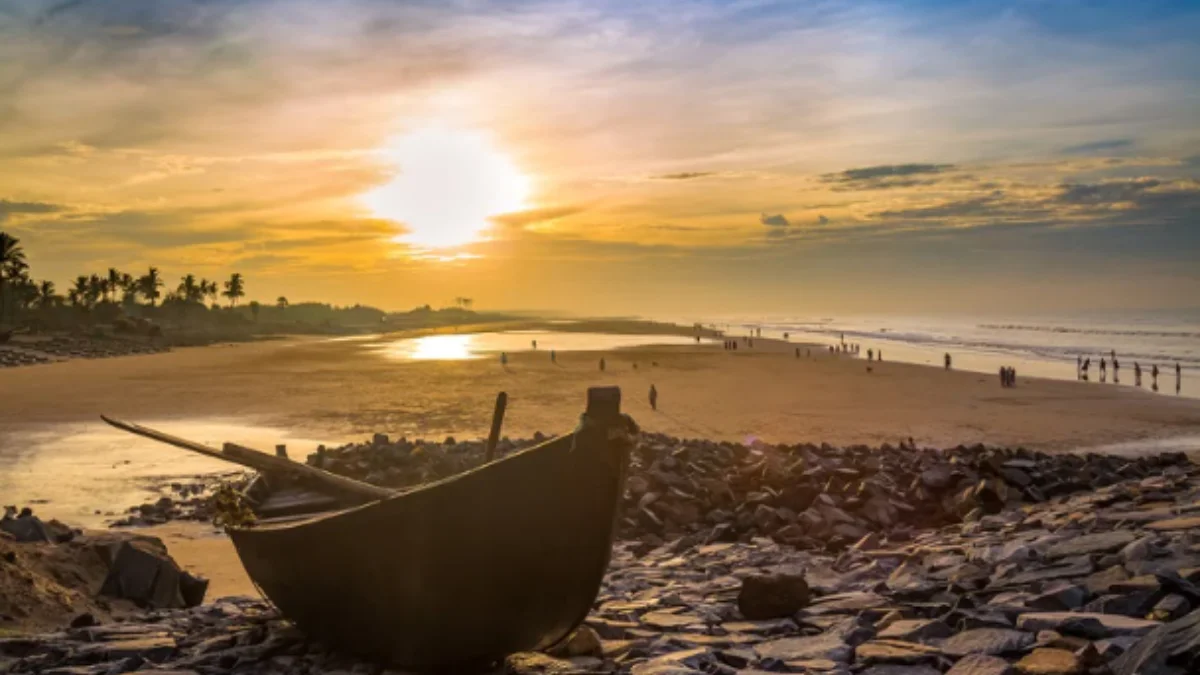
Embark on a stroll through the verdant expanse of Henry Island to immerse yourself in the lush beauty of this captivating region. Whether meandering along its pristine beach or venturing into the heart of a dense mangrove jungle accessible via a quaint bamboo bridge, Henry Island offers an intimate encounter with nature’s wonders. The island is home to a fisheries department boasting over 50 ponds, providing yet another delightful avenue to observe the rich flora and fauna that define this unique ecosystem. Henry Island invites you to tread softly, savouring the serenity and diversity that unfold with every step, promising a memorable exploration of Sundarbans’ natural treasures.
5. Burirdabri
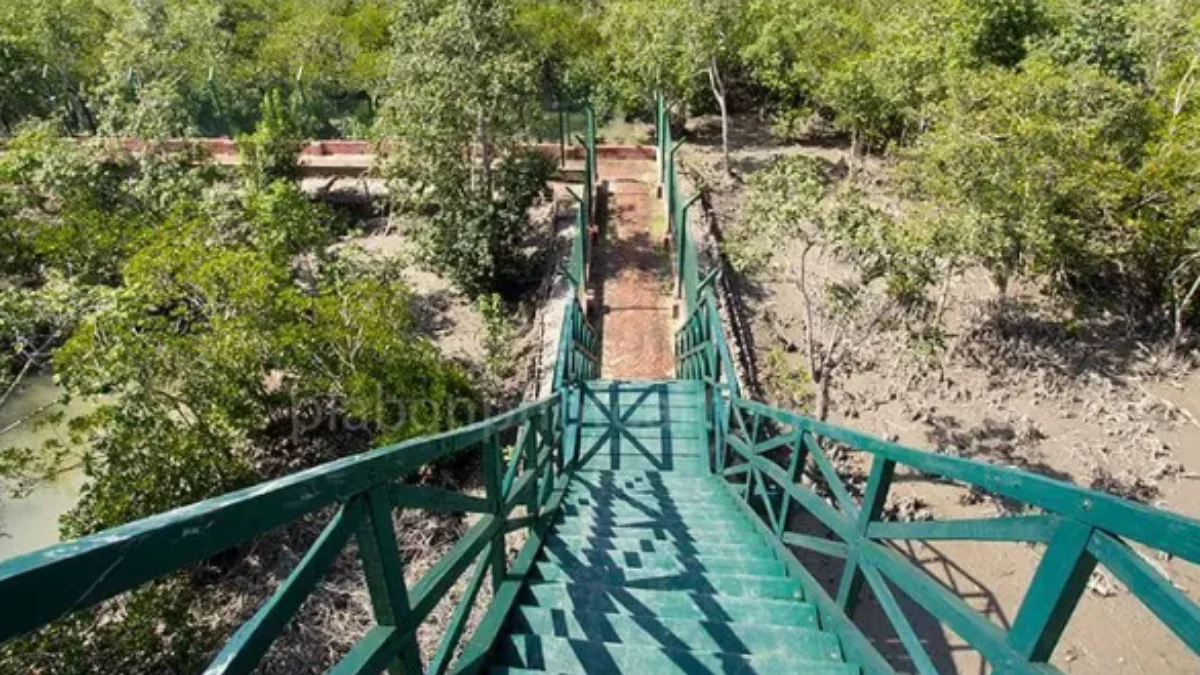
Burirdabri’s unique features, which include a watchtower, mud walk, and mangrove cage route that leads to the picturesque Raimongal View Point, are what make the area famous. The mud walk creates an immersive experience by revealing a range of animals, from crabs to snails. Up to ten persons can be accommodated in the watchtower, which provides an unrivalled perspective of the natural splendour of the Bangladesh Sundarbans. Burirdabri is a mesmerising location for nature aficionados, offering tourists an excursion through lush landscapes and various species. It serves as a tribute to the natural marvels of the Sundarbans.
6. Marichjhanpi
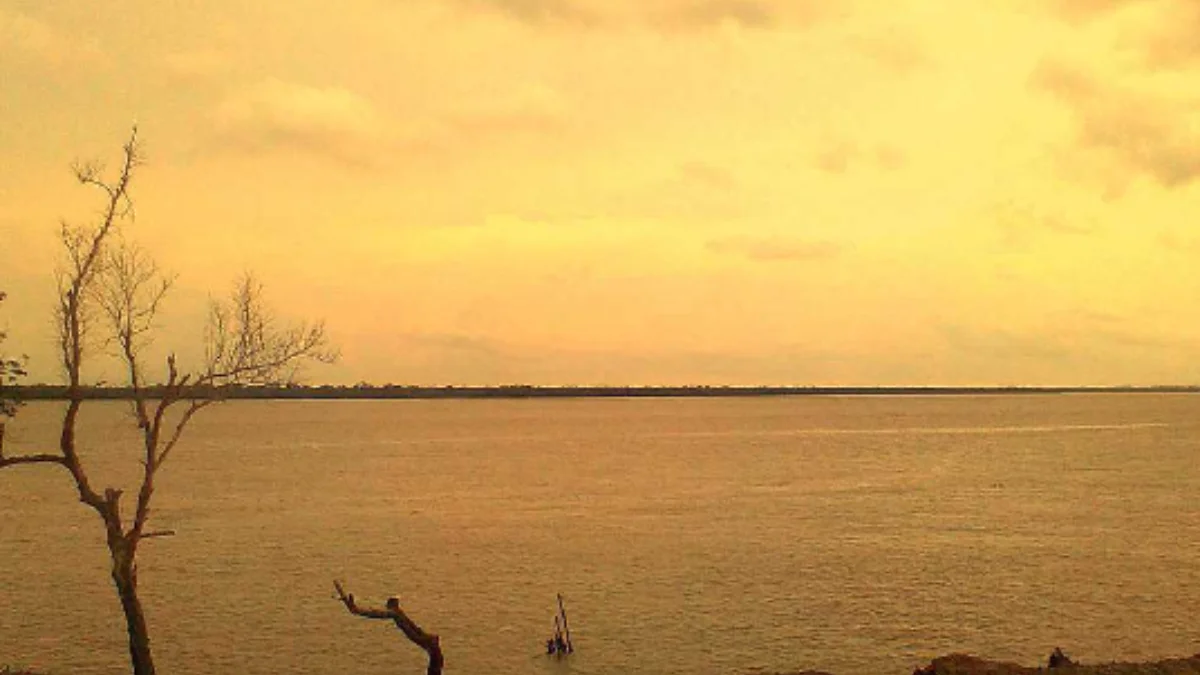
Tucked away in the famous Sundarbans mangroves, Marichjhanpi has a sordid past as an island connected to horrors. The name Marichjhanpi evokes a dark period of history characterised by political and social unrest. The island has come to represent a convoluted story in which conflicts between conservation efforts and human settlements have had a lasting impact. Even though the stunning Sundarbans surround Marichjhanpi, its name has a historical significance that emphasises the complex relationship between environmental preservation, human livelihoods, and the difficulties of coexisting.
7. Sajnekhali Bird Sanctuary
Sajnekhali Bird Sanctuary, located in Sundarbans National Park, is a birdwatcher’s dream come true. This sanctuary, which is tucked away within dense vegetation, provides a serene environment for seeing a wide variety of bird species in their native range. Kingfishers, open-billed storks, the magnificent White Bellied Sea Eagle, the enchanted Paradise Flycatcher, and the secretive Asian Dowitchers are some of the colourful avian residents. Every fluttering wing and melodic chirp creates a lively tableau of the numerous birds living inside the alluring vastness of Sundarbans National Park
8. Ghoramara Island
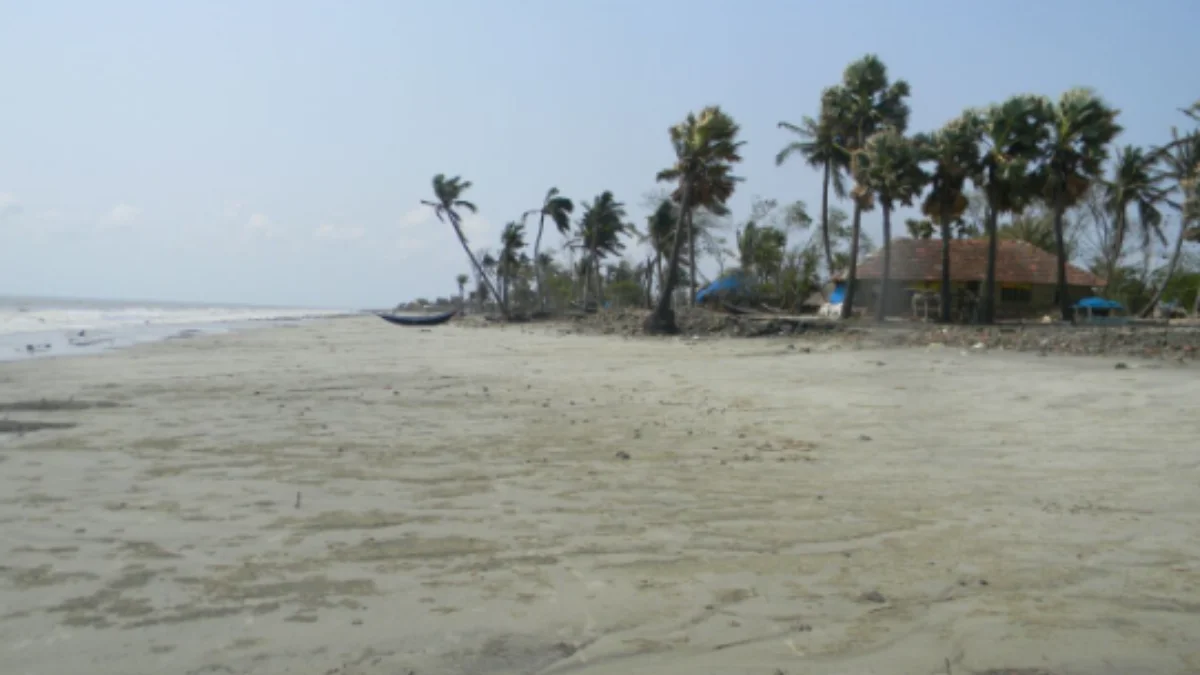
Ghoramara Island, in the Sundarbans delta, 92 km south of Kolkata, is a striking example of the effects of climate change. This little island is beset by the intractable problems of increasing sea levels in the Bay of Bengal, widespread soil erosion, and global warming. The consequences are severe, as Ghoramara experiences startling rates of reduction. The fragile equilibrium between land and sea is upset, making this formerly prosperous island more susceptible to changes in the surrounding environment. The predicament of Ghoramara is a sobering reminder of the pressing need for international conservation initiatives to tackle the complex issues brought about by climate change in fragile ecosystems such as the Sundarbans.
9. Sudhanyakhali Watch Tower
The Sudhanyakhali Watchtower is a well-known observation point in the Sundarbans National Park that offers a great viewpoint for seeing the abundant wildlife of the area. This watchtower, which is surrounded by mangrove woods, provides an extraordinary opportunity for tourists to see animals, including the well-known Royal Bengal Tigers, in their native environment. The Sudhanyakhali Watchtower is a popular destination for nature lovers and wildlife enthusiasts looking for an immersive experience in the varied ecosystems of the Sundarbans due to its elevated structure and strategic location that provide panoramic views of the surrounding landscapes.
10. Kanak Island
The Olive Ridley turtle’s primary breeding habitat is Kanak Island, which is located in the Sundarbans National Park. During the nesting season, a significant portion of these turtles travel more than 100 km in an incredible natural display. The Olive Ridley turtles make the spectacular yearly trek to Kanak Island, where they deposit their eggs. In the peaceful and essential habitat of the Sundarbans, these amazing animals contribute to the survival of their species throughout the nesting season, which takes place in the winter months from December to early March.
Sundarbans National Park Timings and Entry Fee
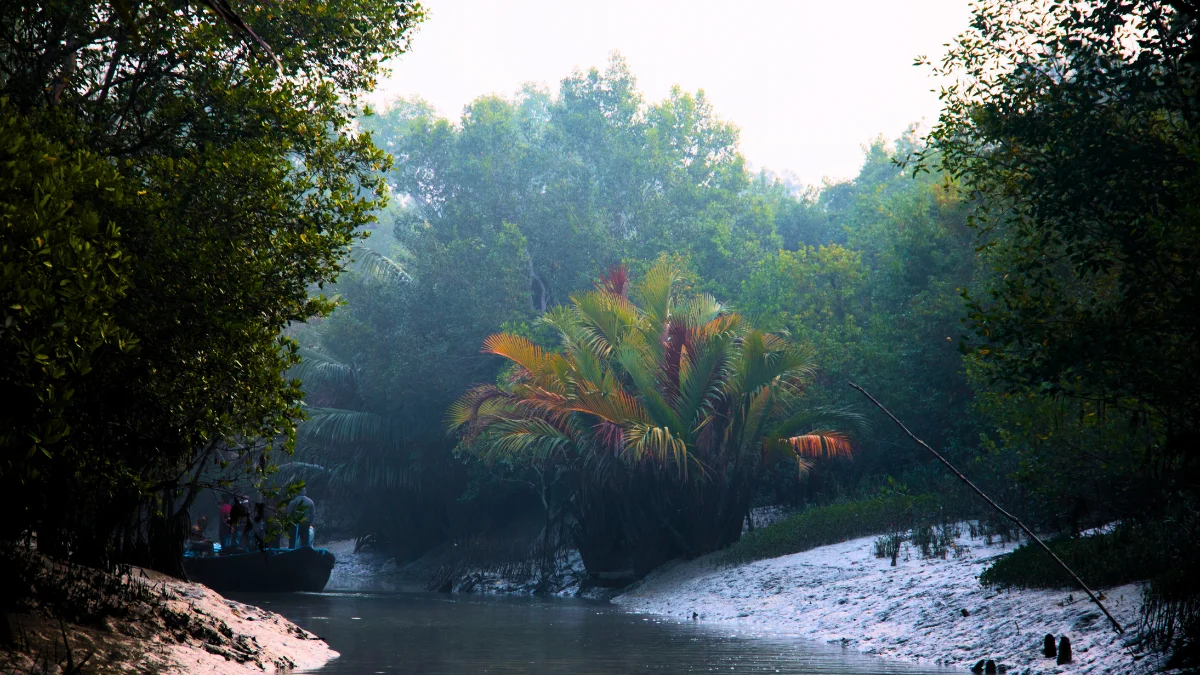
Sundarbans National Park Timings:
The Sundarbans National Park follows the following timetable for operations:
Monday to Friday: Open from 08:00 AM to 06:00 PM
Saturdays: Open from 10:00 AM to 04:00 PM
The forest area is closed on Sundays.
Tourists must arrange their travel schedules appropriately and observe the designated window of time in order to guarantee a seamless and pleasurable stay within the Sundarbans National Park.
Sundarbans National Park Entry Fees:
Rs. 60 for Indians and Rs. 200 for foreigners.
Sundarbans National Park Permit:
A permit is required to enter Sundarbans National Park. These may be easily obtained from the Office of the Field Director, Sundarban Tiger Reserve, which has offices in Canning, Sonakhali, Bagna, and Sajnekhali. Special permits, available from the Joint Secretary of the Forest Department in Kolkata’s Writer’s Building, are required for foreign visitors. The standard permit has a five-day expiration date; visitors may seek an extension from the forest ranger in charge of the region. This system guarantees the Sundarbans National Park’s controlled access and conservation initiatives.
Sundarbans National Park Safari
Surrounded by vast amounts of water, the Sundarbans provide an unmatched sailing experience, with the chance to come face to face with a Royal Bengal tiger swimming alongside your vessel. Both private and public cruises accommodate a range of budgets and luxury levels of taste.
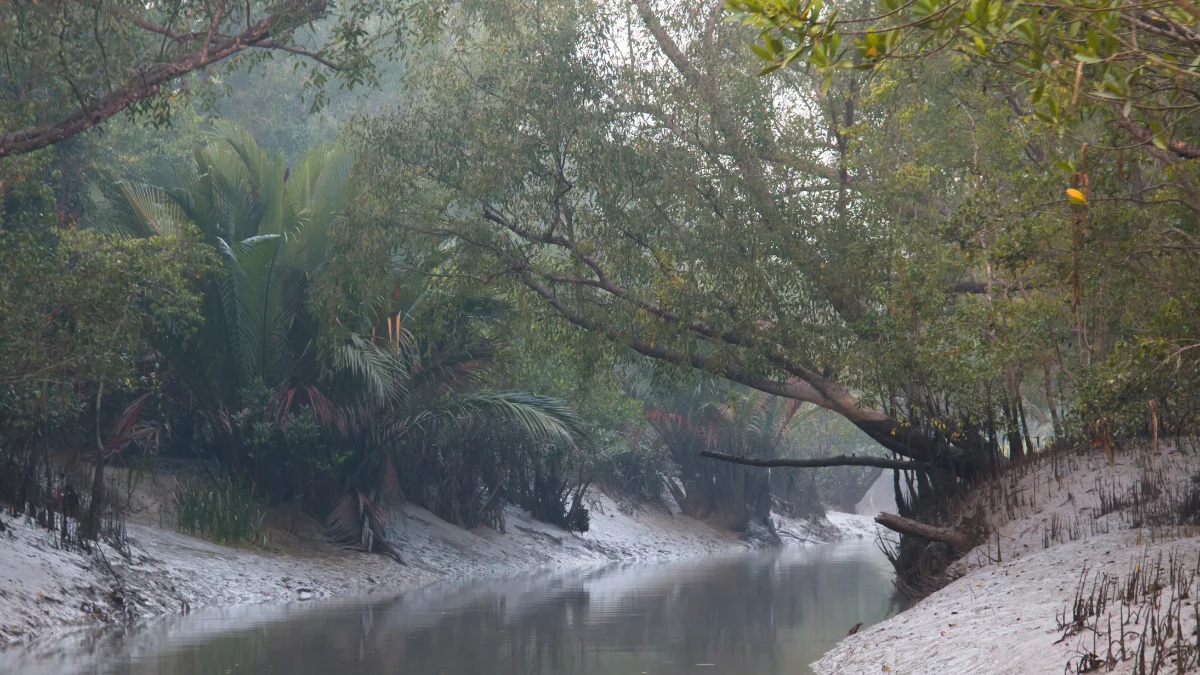
Government-Operated Boat Safaris:
These boat safaris are offered in both AC and non-AC versions, and they may be reserved for a single day or longer periods—up to a week. Boats are prohibited after 06:30 PM. The hours are 08:30 AM to 04:00 PM.
Cruise Tours:
The watchtowers of Sudhanyakhali, Sajnekhali, Jhingakhali, and Dobanki are explored on the West Bengal government’s two-night cruise. Included on a 1-night trip is Jhingakhali. Up to 50 persons can be accommodated aboard the Chitralekha and Sarbajaya boats during tours. Because the boats are small, expect big crowds and few opportunities to see animals.
Private Cruises:

Private alternatives include Sundarban Chalo, Vivada Sundarban, Sundarban Houseboat, Help Tourism Sundarban’s Jungle Camp, and Tour De Sundarban. Private excursions range from 2 nights/3 days budget tours to 6 nights/7 days luxury tours. The hours typically begin at 8:00 AM and conclude between 5:00 and 5:30 PM. The price per person varies from INR 2,000 to INR 50,000.
Private Boats:
Private boat rentals are offered for day trips. They begin at 08:00 AM and end between 05:00 and 05:30 PM. The price includes all meals, which start at INR 950 per person. Paying for the watercraft, video camera, and forest entrance fees separately and directly to the forest department are extra charges for overnight stays.
Best Time to Visit Sundarbans National Park
Because of its closeness to the Bay of Bengal, the Sundarbans experience high levels of humidity. The region receives significant rainfall during monsoon, which lasts from mid-June to mid-September. A spell of sunny weather follows the monsoon season and lasts until mid-March. The Sundarbans’ distinct ecosystem is influenced by this cyclical weather pattern, which also adds to the general vibrancy of the region’s landscapes and the lushness of its mangrove forests. The dynamic and always shifting ecosystem of this amazing delta region is shaped by the delicate balance between humidity, rainfall, and following favourable circumstances.
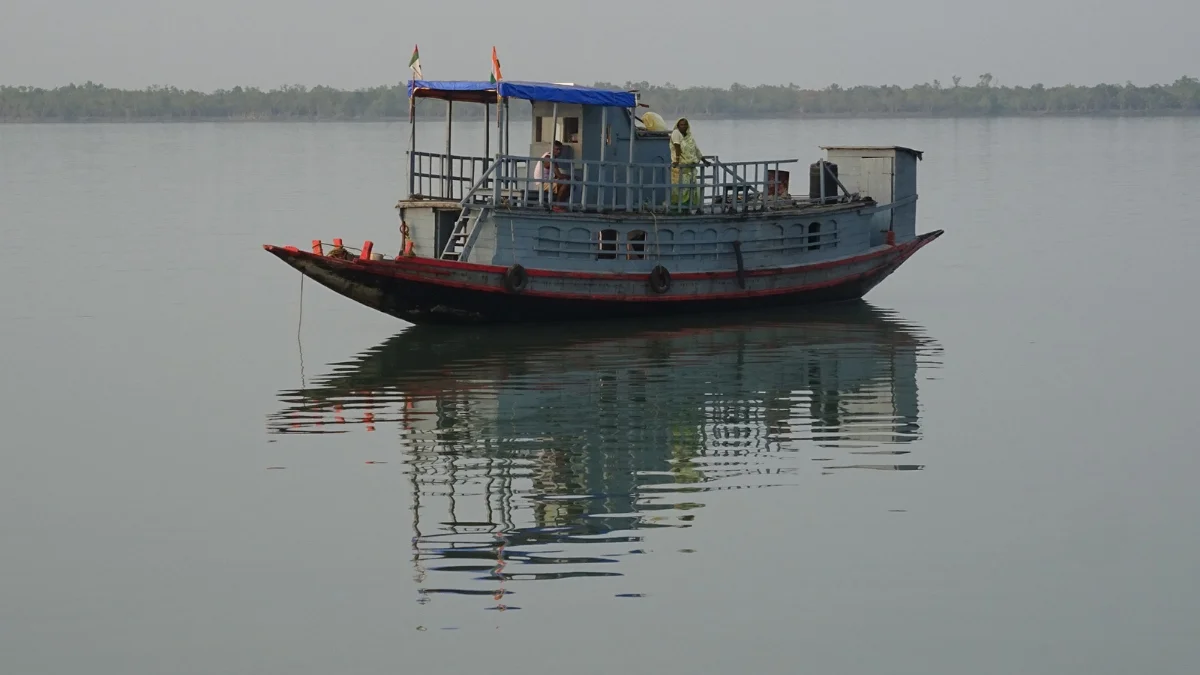
How to Reach Sundarbans National Park
By Air:
Flying is the most practical alternative, and the closest airport is Kolkata’s Netaji Subhash Chandra Bose airport. Roughly 112 kilometres away from Sundarbans, visitors can hire motorboats for the last part of the tour by continuing to Canning, Basanti, Gosaba, or any launch station.
By Train:
Canning and Sealdah (South) are the closest railheads for those who want to go by rail. The trip is covered in around 1.5 hours by regular local trains. From Kolkata, travellers board the rail to Canning, from whence they take shared vehicles to the Sundarbans mainland.
By Road:
The Sundarbans National Park and Kolkata are connected by a well-established road network spanning a surface area of around 110 km. From Sonakhali (100 km), Namkhana (105 km), Canning (64 km), Raidighi (76 km), and Najat (92 km), there is public transit.
By Waterways:
In the Sundarbans, transportation by waterway is the main means of getting about. Travellers may access the Sundarbans forest and tour the region by canal conveyance by hiring motorboats from the closest ports. Motor launch services provide a distinctive and engaging way to see the Sundarbans and may be booked from ports such as Namkhana, Sagar Island, Sajnekhali, Sonakhali, and Raidighi.
Conclusion
The Sundarbans National Park is heaven for those who love a different take on Indian wildlife and biodiversity. It is a once-in-a-lifetime experience that you must have!


